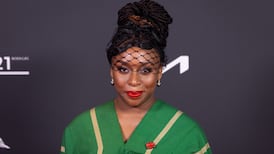When Elizabeth Bowen and William Trevor adjudicated the inaugural Hennessy Literary Awards, in 1971, they opened a door through which an array of major writers emerged over the following decades.
The seven winners that year all went on to careers in writing: Des Hogan, Vincent Lawrence, Kate Cruise-O'Brien and Patrick Buckley writing fiction, John Boland and Liam Murphy as poets and critics, and Dermot Morgan as a writer of the satirical radio show Scrap Saturday, among other things.
Today The Irish Times introduces the 18 new and emerging writers shortlisted for the 45th anniversary Hennessy awards, which will be announced at a gala ceremony at the Irish Museum of Modern Art, in Dublin, later this month. Their nominated stories and poems were published on the New Irish Writing page in 2015, its first year at The Irish Times; it was established by David Marcus at the Irish Press in 1968.
Hugo Hamilton and Paul Perry, two authors whose own first fiction was published in New Irish Writing, join me as this year’s judges. Awards of €1,500 will be made in three categories – First Fiction, Emerging Fiction and Emerging Poetry – and a New Irish Writer of the Year, chosen from that winning trio, will receive an extra €2,500.
A measure of the significance of the page is not only that it has, from the start, provided a national platform for many of the writers who are shaping contemporary Irish literature but also that they, in turn, have stimulated the development of a vibrant Irish publishing industry.
Back in the late 1960s and early 1970s the young writers discovered in the Irish Press had no Irish publishers to turn to with their first books. Des Hogan, whose first story was published in one of the first New Irish Writing pages, when he was 18, teamed up out of frustration, in 1976, with his fellow Marcus writers Neil Jordan, Ronan Sheehan and Fred Johnston to establish the Irish Writers' Co-operative as their own publishing house.
The success of the co-op's first titles, Hogan's debut novel, The Ikon Maker, and Jordan's collection Night in Tunisia encouraged Philip McDermott to launch Poolbeg Press in 1977. Working from a bedroom in Finglas, 19-year-old Dermot Bolger set up Raven Arts Press. Antony Farrell started Lilliput Press. Peter Fallon's Gallery Press gradually established itself as home for some of the best Irish poetry.
Since New Irish Writing moved to The Irish Times the number of stories and poems submitted has more than doubled, to more than 3,000 a year. This surge has been matched by ever higher standards. Two of last year's Hennessy winners had already found publishers by the time they actually received their Hennessy awards. Tramp Press brought out a debut novel by Sara Baume, Spill Simmer Falter Wither, whose winning story had appeared in New Irish Writing the previous January. It has just been longlisted for the Baileys Women's Prize for Fiction. Hachette published Henrietta McKervey's What Becomes of Us and followed up this year with her second novel, The Heart of Everything. Simon Lewis's first collection of poetry, Jewtown, will be published by Doire Press next month.
A highlight of the 2016 anniversary awards ceremony, on April 28th, will be the induction of the 14th member of the Hennessy Hall of Fame, which was inaugurated in 2003 to celebrate writers whose first work was published in New Irish Writing. Previous recipients are Dermot Bolger, Joseph O’Connor, Patrick McCabe, Colum McCann, Frank McGuinness, Anne Enright, Hugo Hamilton, Neil Jordan, Sebastian Barry, John Boyne, Dermot Healy, Deirdre Madden and Paula Meehan.

















